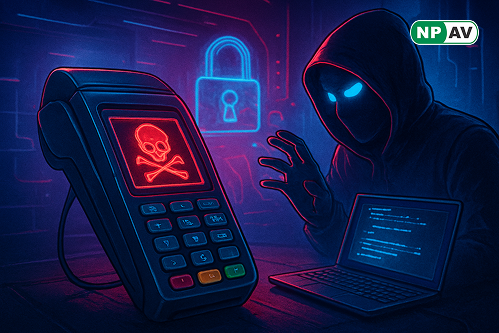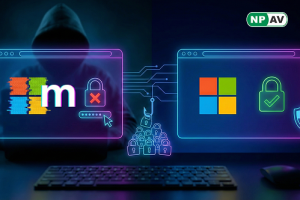Blogs
-
Read moreAPT group Mysterious Elephant exploits WhatsApp with custom malware for data theft—learn to patch vulnerabilities, monitor networks, and train against phishing to protect from these evolving cyber attacks.
-
Read moreIgnoble Scorpius exploited a VPN login for ransomware chaos, stealing data and encrypting systems—learn to use MFA, segment networks, and detect threats early to safeguard your business from these growing risks.
-
Read moreCISA warns of CVE-2025-54253 in Adobe Experience Manager, allowing unauthenticated code execution—fix now for versions up to 6.5.23.0. Also, active CVE-2016-7836 in SKYSEA; learn how to secure your systems from these critical vulnerabilities.
-
Read moreYouTube's October 15, 2025, outage disrupted streaming for millions—learn about the causes, fixes, and how to stay informed via @TeamYouTube and Downdetector for future disruptions.
-
Read moreUC researchers reveal Pixnapping, letting hackers steal 2FA and app data via Android side channels—up to 61% accurate with AI. No full patch yet; update devices, check permissions, and secure apps to avoid risks.
-
Read moreWith Windows 10 support ending October 14, 2025, users face malware and breach risks—upgrade to Windows 11 or get ESU for patches. Learn quick steps to back up data, use antivirus, and avoid cyber threats post-support.
-
Read moreUC study reveals how hackers use mouse sensors to eavesdrop on conversations, boosted by AI for stealing data—up to 61% accuracy. Protect yourself with simple tips like full shutdowns and mic indicators against this sneaky threat.
-
Read moreNew research reveals Telegram as the primary tool for 120+ hacktivist groups to plan DDoS strikes via 11,000 posts and hashtags-exposing worldwide targets. Learn to monitor threats, bolster DDoS defenses, and stay ahead of visible cyber tactics.
-
Read more2017 emails reveal IndusInd executives ignored Forex hedging red flags, leading to potential profit manipulation—RBI probes ongoing; experts urge stronger banking audits and governance to safeguard against accounting scandals.
-
Read moreFraudsters in Delhi posed as NCB officials to extract OTPs and siphon ₹20.89 lakh—police arrested 5 linked to 473 cases. Enable 2FA, verify calls, and report to 1930 to avoid digital arrest traps and protect your finances.
-
Posted: October 14, 2025Views: 46Read moreResearcher exposes vulnerability in Worldline Yomani XR's debug port, allowing instant root shell access for malware or network pivots—despite tamper protections. Merchants must patch firmware and audit devices to block this high-risk entry point.
-
Posted: October 14, 2025Views: 6355Read moreNPAV wishes you a safe, secure, and joyous Diwali! As you celebrate the festival of lights, let’s also protect our digital world from the darkness of cyber threats.
-
Posted: October 14, 2025Views: 49Read moreKandji uncovers a September 2025 campaign where attackers clone Homebrew sites to inject malware like Odyssey Stealer via clipboard tricks—exploit C2 servers and bypass trust; mitigate by verifying sources and using endpoint monitoring.
-
Posted: October 14, 2025Views: 57Read moreSophos exposes Maverick Menace, a self-spreading Android worm using WhatsApp ZIP lures to disable Defender/UAC, hijack sessions with Selenium, and deploy trojan for bank/crypto theft—hits 400+ environments; verify attachments and use behavioral antivirus to protect.
-
Read moreAttackers use zero-day in Edge's IE Mode Chakra engine to trick users into legacy reloads, enabling RCE and SYSTEM access for malware. Microsoft disabled easy triggers—configure manually via Settings, migrate from IE, and prioritize modern web standards to stay secure.
-
Read moreIT pro in Pune scammed ₹3.66 crore via WhatsApp group and bogus trading app granting remote access—fake profits lured investments. Expert tips: Use official apps, enable 2FA, verify before investing—report to cyber cell to stay safe.
-
Read more"Trinity of Chaos" group (Muddled Libra, Bling Libra, LAPSUS$) steals 1B Salesforce records targeting retail/hospitality; launches DLS October 3, 2025, with FBI seizure October 9. EaaS model enables fraud—implement zero trust and ISAC intel to defend against data theft.
-
Read moreIndian scammers use WhatsApp fake ticket alerts to push RAT-infected mParivahan apps, stealing OTPs, spying via camera, and draining banks. Download from official stores, update OS, use antivirus—report to 1930 if hit to stay safe.
-
Read moreHigh-severity CVE-2025-61884 (CVSS 7.5) in Oracle E-Business Suite's Configurator allows unauthenticated HTTP attacks to access sensitive data (versions 12.2.3-12.2.14). Follows Cl0p-linked CVE-2025-61882 exploits—apply updates, segment networks, and scan for vulnerabilities now.
-
Read moreNew SnakeKeylogger campaign spoofs CPA Global/Clarivate emails with ISO/ZIP lures containing BAT/PowerShell payloads to log keystrokes, hijack clipboard, and exfiltrate data. Persists via "SysUpdate" tasks—train users, sandbox attachments, and monitor PowerShell for defense.

























